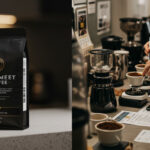
What Is Gourmet Coffee? A Guide to High-End Brews

Table of Contents
ToggleIntroduction to Gourmet Coffee
What Is Gourmet Coffee?
Gourmet coffee is a term used to describe high-quality coffee made from premium beans, often sourced from specific regions and crafted with meticulous attention to detail. Unlike mass-produced coffee, gourmet coffee emphasizes flavor, aroma, and overall sensory experience. It’s about celebrating the unique characteristics of each bean, ensuring every cup is a memorable one.
How It Differs from Regular Coffee
Regular coffee often prioritizes convenience and affordability, using beans that are commercially produced and blended for consistency. In contrast, gourmet coffee focuses on specialty-grade beans, which are carefully cultivated, harvested, and roasted to highlight their nuanced flavors. Here’s a quick comparison:
- Bean Quality: Gourmet coffee uses Arabica beans or other high-quality varieties, while regular coffee may rely on Robusta beans.
- Roasting Process: Gourmet coffee is typically roasted in small batches to preserve flavor, whereas regular coffee is often mass-roasted.
- Flavor Profile: Gourmet coffee offers complex and vibrant notes, while regular coffee tends to have a simpler, more uniform taste.
The Origins of Gourmet Coffee
Regions Known for High-Quality Beans
Gourmet coffee begins at its source: the regions where the beans are cultivated. Some of the most renowned coffee-producing areas include:
- Ethiopia – Often referred to as the birthplace of coffee, Ethiopia offers beans with complex, fruity, and floral notes.
- Colombia – Known for its balanced, medium-bodied coffees with hints of caramel and citrus.
- Brazil – The largest coffee producer in the world, Brazil’s beans are prized for their nutty, chocolatey flavors.
- Costa Rica – Famous for its bright, clean, and citrusy profiles, often with a hint of sweetness.
- Jamaica – Home to the legendary Blue Mountain coffee, which is celebrated for its mild flavor and smooth finish.
The Importance of Terroir in Flavor
The concept of terroir—the unique combination of soil, climate, altitude, and geography—plays a crucial role in shaping the flavor of gourmet coffee. Here’s how:
- Altitude – Higher elevations often yield beans with more acidity and complexity, ideal for specialty coffee.
- Soil – Volcanic soils, for example, are rich in minerals and can impart unique flavors to the beans.
- Climate – Consistent rainfall and temperature variations help develop the bean’s flavor profile over time.
- Geography – The surrounding environment, such as shade from trees, can influence the bean’s development and taste.
Understanding terroir helps coffee enthusiasts appreciate why beans from different regions offer such distinct and exciting flavors.
Characteristics of Gourmet Coffee
Flavor Profiles and Aromas
Gourmet coffee is celebrated for its complex and nuanced flavor profiles, which can range from fruity and floral to nutty and chocolatey. Unlike mass-produced coffee, gourmet varieties often showcase distinct tasting notes influenced by their origin, altitude, and processing methods. For example:
- African coffees often have bright, citrusy notes with hints of berry or floral undertones.
- Latin American coffees tend to be balanced, with flavors of caramel, nuts, or cocoa.
- Asian coffees may offer earthy, spicy, or syrupy textures.
The aroma of gourmet coffee is equally captivating, with fragrances that can evoke freshly ground spices, ripe fruits, or even roasted nuts. These sensory experiences are a hallmark of high-quality beans, carefully cultivated and expertly roasted to preserve their natural characteristics.
Bean Quality and Grading Standards
At the heart of gourmet coffee lies the quality of the beans, which is determined by meticulous grading standards. Specialty coffee is typically graded on a scale of 0 to 100 by organizations like the Specialty Coffee Association (SCA). Beans scoring 80 points or above are considered specialty-grade, signifying exceptional quality. Key factors in grading include:
- Size and uniformity: Larger, evenly sized beans often roast more consistently.
- Defects: Gourmet coffee has minimal to no defects, such as cracks, insect damage, or mold.
- Moisture content: Optimal moisture levels ensure freshness and longevity.
Additionally, gourmet coffee is often made from Arabica beans, which are prized for their delicate flavors and lower acidity compared to Robusta beans. The meticulous attention to detail from farm to cup ensures that every sip of gourmet coffee is a premium experience.
Brewing Methods for Gourmet Coffee
Popular Brewing Techniques
When it comes to brewing gourmet coffee, the method you choose can significantly impact the flavor and aroma of your cup. Two of the most popular techniques among coffee connoisseurs are pour-over and French press.
- Pour-Over: This method involves slowly pouring hot water over freshly ground coffee beans in a filter. It allows for precise control over the brewing process, resulting in a clean, nuanced cup of coffee. Popular devices for pour-over include the Hario V60 and Chemex.
- French Press: Also known as a press pot or plunger pot, the French press involves steeping coarsely ground coffee in hot water before pressing down a metal or mesh plunger to separate the grounds. This method yields a rich, full-bodied coffee with a robust flavor profile.
Importance of Equipment
Investing in high-quality brewing equipment is essential for achieving the best possible results with gourmet coffee. Your tools can make or break your coffee experience. Here are some key recommendations:
- Grinder: A burr grinder ensures a consistent grind size, which is crucial for even extraction. Blade grinders, on the other hand, can produce uneven grounds, leading to inconsistent flavors.
- Kettle: A gooseneck kettle offers precision when pouring water, especially for methods like pour-over. It allows you to control the flow rate and avoid over-saturating the coffee grounds.
- Scale: Measuring your coffee and water by weight rather than volume ensures the perfect coffee-to-water ratio, which is critical for balanced extraction.
Role of Water Quality
Water is often overlooked, but it’s a vital component of your coffee. If your water tastes bad, your coffee will too. Here’s why water quality matters and how you can optimize it:
- Purity: Use filtered water to remove impurities like chlorine or minerals that can alter the taste of your coffee.
- Temperature: The ideal brewing temperature is between 195°F and 205°F. Too hot, and you risk burning the coffee; too cool, and the extraction will be incomplete.
- Mineral Content: Water with a balanced mineral content (not too hard or too soft) enhances the coffee’s natural flavors. Specialty coffee shops often use water with a specific mineral profile to achieve consistent results.
Why Invest in Gourmet Coffee?
Health Benefits and Superior Taste
Gourmet coffee isn’t just about indulgence; it’s also a healthier choice compared to mass-produced alternatives. High-quality beans are typically grown in optimal conditions, resulting in a richer nutrient profile. These beans are often shade-grown, which allows them to develop more antioxidants, essential oils, and complex flavors. Studies have shown that gourmet coffee can contribute to improved heart health, enhanced cognitive function, and even a reduced risk of certain chronic diseases.
When it comes to taste, gourmet coffee stands in a league of its own. Specialty coffee beans are meticulously roasted to highlight their unique flavor profiles, offering a sensory experience that’s unparalleled. Whether you prefer the bright acidity of a Kenyan single-origin or the chocolatey notes of a Colombian roast, gourmet coffee allows you to savor every sip with clarity and depth.
Supporting Ethical Farming Practices
Investing in gourmet coffee also means supporting ethical and sustainable farming practices. Many specialty coffee producers prioritize fair trade, ensuring that farmers receive a living wage for their labor. This not only improves the livelihoods of coffee growers but also encourages sustainable agricultural methods that protect the environment.
- Fair Trade Certified: Guarantees fair prices and better working conditions for farmers.
- Organic Farming: Reduces the use of harmful pesticides and promotes soil health.
- Direct Trade: Builds relationships between roasters and farmers, ensuring transparency and quality.
By choosing gourmet coffee, you’re not just treating yourself to a superior cup—you’re also contributing to a more equitable and sustainable coffee industry.
How to Choose the Right Gourmet Coffee
Reading Labels and Certifications Like a Pro
Understanding the details on a gourmet coffee label is crucial for making an informed choice. Look for these key indicators:
- Origin: Single-origin beans highlight distinct regional flavors, while blends offer balanced complexity.
- Roast Date: Always choose coffee with a clearly marked roast date—the fresher, the better. Ideally, buy beans roasted within the past 2-4 weeks.
- Certifications:
- Fair Trade ensures ethical sourcing and fair wages for farmers.
- Organic guarantees beans grown without synthetic pesticides or fertilizers.
- Rainforest Alliance supports sustainable farming practices.
Be wary of vague terms like “premium” or “artisanal”—these aren’t regulated and don’t guarantee quality. Instead, focus on transparency from the roaster regarding sourcing, processing methods, and flavor notes.
Matching Coffee to Your Unique Taste Preferences
Gourmet coffee isn’t one-size-fits-all. To find your perfect match, consider these factors:
- Flavor Profiles:
- Bright & Fruity: African coffees (Ethiopian, Kenyan) with floral or citrus notes.
- Chocolatey & Nutty: Latin American coffees (Colombian, Brazilian) with smooth, caramel undertones.
- Bold & Earthy: Indonesian coffees (Sumatran, Sulawesi) with deep, spicy complexity.
- Roast Level:
- Light roasts preserve delicate origin flavors—ideal for nuanced pour-overs.
- Medium roasts balance acidity and body—great for drip or Aeropress.
- Dark roasts emphasize smoky richness—best for espresso or French press.
- Processing Method:
- Washed coffees tend to be cleaner and brighter.
- Natural/dry processed coffees often have intense fruitiness.
- Honey processed coffees offer a sweet, syrupy middle ground.
Tip: Many specialty roasters offer sample packs—a budget-friendly way to explore different profiles before committing to a full bag.
Tips for Storing and Enjoying Gourmet Coffee
To fully appreciate the exquisite flavors of gourmet coffee, proper storage and mindful preparation are essential. Whether you’re a home barista or a casual coffee lover, these expert tips will help you preserve freshness and elevate your brewing experience.
Proper Storage for Maximum Freshness
Gourmet coffee is at its best within weeks of roasting, so how you store it makes all the difference. Follow these guidelines to keep your beans vibrant:
- Use an airtight container: Oxygen is the enemy of freshness. Store coffee in a dark, airtight canister away from heat and moisture.
- Keep it cool but not cold: Avoid extreme temperatures. While refrigeration may seem logical, the fluctuating moisture can harm flavor. A pantry or cupboard is ideal.
- Buy in small batches: Purchase only what you’ll consume in 2-3 weeks to ensure peak flavor.
“Freshness is the soul of great coffee. Treat your beans like a delicate spice—protect them from light, air, and moisture.” —Professional Roaster’s Advice
Brewing Tips for the Best Experience
Preparing gourmet coffee is an art. Follow these steps to unlock its full potential:
- Grind just before brewing: Whole beans retain flavor longer. Use a burr grinder for a consistent grind size suited to your brewing method (e.g., coarse for French press, fine for espresso).
- Mind your water: Use filtered water heated to 195–205°F (90–96°C). Too hot, and you risk bitterness; too cool, and flavors won’t fully extract.
- Measure precisely: A 1:15 to 1:18 coffee-to-water ratio is a reliable starting point (e.g., 20g coffee to 300g water). Adjust to taste.
Savoring the Flavor
To truly appreciate gourmet coffee, engage all your senses:
- Smell first: Inhale the aroma deeply—a sign of quality and complexity.
- Take small sips: Let the coffee coat your palate to detect notes like citrus, chocolate, or floral undertones.
- Note the finish: A lingering aftertaste often reveals hidden layers of flavor.
FAQ
Can I freeze gourmet coffee to prolong freshness? Freezing can extend shelf life, but it’s best for unopened bags. Divide into single-use portions, squeeze out air, and thaw at room temperature before opening to avoid condensation. How soon after roasting should I brew my coffee? Wait 3–7 days post-roast to allow gases to escape (degassing), but aim to brew within a month for optimal taste. Does the cup or mug material affect flavor? Yes! Porcelain or ceramic preserves temperature and flavor better than metal or plastic.
With these tips, every cup of gourmet coffee can be a revelation. Treat your beans with care, brew with intention, and savor the journey—one sip at a time.
is a writer and editor at Coffee With Finance, blending her love for coffee, personal finance, and visual storytelling. She crafts engaging articles, curates site images, and shares brewing tips, bean origins, and practical money advice. Anna believes that managing finances, like making great coffee, should be intentional and rewarding — bringing clarity, warmth, and beauty to every story she tells.

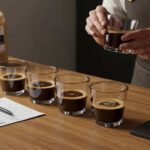
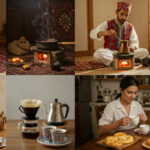










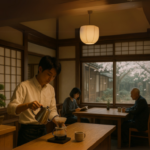




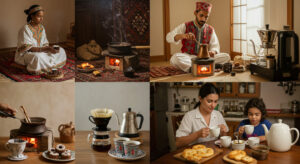








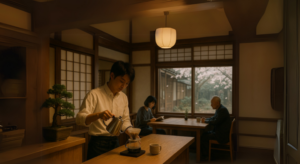
Post Comment